 |
Emergency Protocols for School Settings |
1.25 |
This course will take you through various topics related to emergency protocols in schools. You will learn how an Emergency Operations Plan is created and implemented. This course will help you understand your role in supporting before, during, and after school threats and hazards. This course will also explain the various assessments schools use to determine which threats and hazards are necessary to prepare for, how to collaborate with local and state organizations, and what items are necessary to include in an Emergency Operations Plan. |
 |
Lifting and Moving—Lesson 1 |
0.50 |
There are several disciplines of healthcare that require proficiency in lifting and moving. Prehosital medicine and fire-service-related rescue requires a proficiency in this area that is beyond any other area of healthcare. Our team of experts discuss the challenges that we face in our community. In this first session of the series, we explore the mindset and preparation that must take place in order to achieve success.
Final Exam:This multiple choice exam is designed to test your knowledge of the material you just reviewed. You have two attempts to gain a 70% or higher on this exam. Please take your time and answer each question carefully. |
 |
Take it Outside!: The Importance of Outdoor Play (CDA 2) |
2.00 |
This course tackles the alarming decline in outdoor play and empowers you to reclaim its critical role in children's well-being. Explore research-backed evidence highlighting the benefits of outdoor time on healthy habits, physical development, and cognitive growth. Discover practical strategies to motivate children to embrace fresh air, movement, and connection with nature, fostering happier, healthier, and stronger youngsters who thrive in the great outdoors. |
 |
STEM in Early Childhood (CDA 2, 3, and 8) |
3.00 |
STEM is an intentional, integrative approach to teaching and learning that can occur across all knowledge areas; it is not a specific curriculum. The STEM approach focuses on providing opportunities for students to explore and develop a comprehensive set of concepts, competencies, and thinking skills. STEM competencies include a vocabulary rich in the language of science, technology, engineering and math—words like hypothesis, gravity, buoyant, balance, temperature, and battery. STEM competencies also include basic principles of engineering, like problem-solving and planning; of science, like experimentation and observation; of technology, like using tools to complete both a task and solve real world problems; and of math by recognizing that basic principles of math are part of everyday activities, like comparing and contrasting, counting, and dividing a whole to create equal parts.
This course is also designed to be part of a Child Development Associate (CDA) Credential™ curriculum. It covers Subject Area 2: Advancing Children’s Physical and Intellectual Development, Subject Area 3: Supporting Children’s Social and Emotional Development and Subject Area 8: Understanding Principles of Child Development and Learning. |
 |
How to Navigate Stress Like a Hero |
1.00 |
If only stress weren’t so stressful. There is good news, though: stress doesn’t have to be the enemy! In fact, we can enhance our emotional intelligence by identifying the sources of our stress and creating a plan for adaptive stress management. Stress fuel—adrenaline and cortisol—can empower us to be Life-Givers or Life-Suckers, and fortunately, we get to make the choice. |
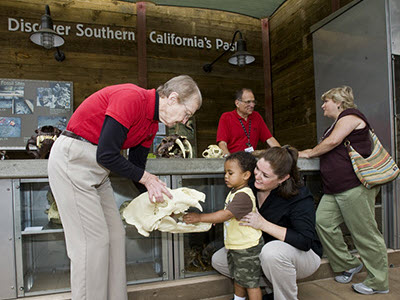 |
San Diego Zoo - Interpretation Basics: Module 1 |
2.50 |
An understanding of interpretation techniques is increasingly important for professionals and volunteers in zoos, aquariums, museums, and a variety of other tourism and hospitality organizations. This course will introduce the basics of interpretation, including the origins of interpretation, Tilden’s Six Principles of Interpretation, connecting tangibles with intangibles, and understanding visitors’ needs and motivations. |
 |
San Diego Zoo - Interpretation Basics: Module 2 |
2.50 |
Docents, guides, and interpreters who’ve successfully completed Interpretation Basics: Module I will further develop their interpretive skills by completing a second interpretation module. Interpretation Basics: Module II demonstrates the importance of purpose, message, and organization. Participants explore body language, word choice, question-and-response, transitions, and the use of props and biofacts. They identify techniques for enhancing audience participation and even practice handling challenging visitor situations. |
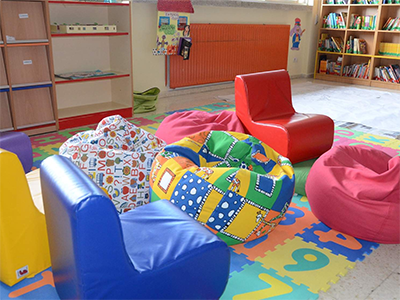 |
Management of Effective Preschool Child Care Environments (CDA 1) |
2.00 |
Unlocking preschool potential through nurturing environments: This course equips you with the knowledge and skills to create spaces that ignite young minds and support healthy development. Explore how to design engaging, child-centered environments and routines that adapt to individual needs, cultural influences, and developmental milestones. Learn to assess your current preschool environment and craft targeted strategies for improvement, fostering a dynamic learning space where every child thrives. |
 |
Cultural Diversity in School Settings |
1.00 |
This course contains definitions of diversity, equity, and inclusion (DEI) and the role DEI plays in the school setting. Embracing diversity, equity, and inclusion benefits everyone within a K-12 institution: faculty, staff, students, and families.
Learners will reflect on the different elements of their own identity and how that impacts their perception of others. This course will also discuss the role of bias in the school setting. |
 |
Supporting Growth Mindset and Self-Efficacy for Paraprofessionals |
1.00 |
This course equips paraprofessionals with the essential knowledge and practical strategies to support student development of a growth mindset and self-efficacy. Participants will explore the foundational concepts of growth mindset and self-efficacy, understanding how these psychological constructs influence student learning and motivation. By the end of the course, paraprofessionals will be well-prepared to empower students to approach challenges with confidence, view mistakes as opportunities for growth, and develop a love for learning. This knowledge and skill set will enable them to make a significant impact on student's academic success and personal development. |
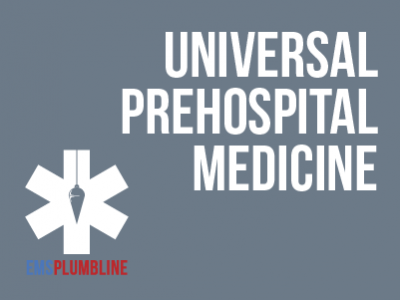 |
Communicating with the Deaf Sign Language User |
1.00 |
This training was developed by Dr. Jason Rotoli, Deaf Health Pathways Director, University of Rochester School of Medicine and Dentistry in conjunction with Dr. Jeremy Cushman, Chief of the University of Rochester’s Division of Prehospital Medicine. Funding for the Care of the Culturally Deaf education was provided by Society of Academic Emergency Medicine. Continuing Education provided by EMSPlumbline
Final Exam: This multiple-choice exam is designed to test your knowledge of the material you just reviewed. You have three attempts to gain an 80% or higher on this exam. Please take your time and answer each question carefully. |
 |
SIDS and Safe Sleep (CDA 1) |
2.00 |
Based on national standards representing the best evidence, expertise, and experience on health and safety policies and practices, and, focused on the American Academy of Pediatrics’ best practice recommendations, this course provides information on reducing the risk of Sudden Infant Death Syndrome (SIDS) and Sudden Unexpected Infant Death (SUID) and for promoting safe sleep in infant care settings. This course is designed to be part of a Child Development Associate (CDA) Credential™ curriculum. It covers CDA Subject Area 1: Planning a Safe, Healthy Environment to Invite Learning. This course can also be taken as a stand-alone learning event, or as part of a broader early childhood education curriculum.
|
 |
Coping with Crying (CDA 1 & 3) |
2.00 |
Babies cry to communicate. In fact, sometimes it's the only way babies can communicate. Coping with crying can be a challenge, especially for people who have little or no experience care for infants. Learning to cope with crying is critical, as infant crying is the number one trigger for shaking a baby. In this course, we will learn about Shaken Baby Syndrome, and about ways to cope with a crying infant. This course is designed to be part of a Child Development Associate (CDA) Credential™ curriculum. It covers CDA Subject Area 1, Planning a Safe and Healthy Environment and CDA Subject Area 3: Supporting Children's Social and Emotional Development. This course can also be taken as a stand-alone learning event, or as part of a broader early childhood education curriculum. |
 |
Sleep is Essential to Good Health (CDA 1) |
2.00 |
This course delves into the science behind sleep, revealing its essential role alongside nutrition and physical activity. Explore recent research highlighting the impact of sleep on hormone regulation, obesity risk, brain development, cognitive function, and behavior. Discover age-specific sleep requirements and gain practical tips and recommendations to nurture healthy sleep habits in children, setting them on the path to well-being and success. |
 |
Growth and Development of Infants and Toddlers (CDA 1) |
2.00 |
A family child care early learning program that supports the growth and development of infants and toddlers needs nurturing caregivers, a healthy and safe environment, good relationships between family and caregiver, and appropriate activities to offer good quality care. This takes planning and knowledge of the growth and development of infants and toddlers. Find ways to enhance your family child care environment and build quality relationships with the infants and toddlers in your care.
This course is designed to be part of a Child Development Associate (CDA) Credential™ curriculum. It covers CDA Subject Area 1, Planning a Safe and Healthy Environment. This course can also be taken as a stand-alone learning event, or as part of a broader early childhood education curriculum. |
 |
Food Safety Practices (CDA 1) |
2.00 |
Safeguarding young minds and bodies is paramount in child care, and food safety plays a crucial role. This course empowers both center and home-based practitioners with vital knowledge and skills to combat foodborne illness (FBI), prevent choking hazards, and minimize other food-related injuries. Discover comprehensive guidelines for implementing effective food safety practices, ensuring you cultivate a healthy and secure environment for every child entrusted to your care. |
 |
Family Educational Rights and Privacy Act (FERPA) for K-12 Institutions |
1.00 |
Welcome to the Family Educational Rights and Privacy Act (FERPA) for K-12 Institutions.
In this course, you will:
Identify what FERPA is.
Explore how educational records can be disclosed, accessed, and amended under FERPA guidelines.
Become familiar with the privacy and accountability goals that FERPA promotes.
Discover the characteristics of personally identifiable information (PII).
Clarify our expectations for enforcing FERPA violations. |
 |
Creativity |
0.50 |
In this course, you will learn about creativity, including what it is, how to encourage it, and how to utilize it for positive collaboration. |
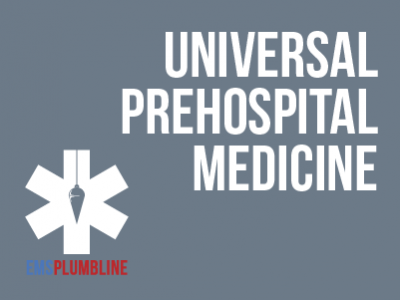 |
Lifting and Moving—Lesson 2 |
0.50 |
In the second session, we will discuss body mechanics and what you can do to properly train to perform in a safe manner. Final Exam: This multiple choice exam is designed to test your knowledge of the material you just reviewed. You have two attempts to gain an 80% or higher on this exam. Please take your time and answer each question carefully.
|
 |
Multi-Age Learning and Interaction (CDA 1 & 5) |
2.00 |
This course explores the dynamic world of mixed-age childcare groupings. Discover how these environments expand learning opportunities for children of all stages, fostering social, emotional, and cognitive development. Delve into the benefits for both children and adults, including a deeper understanding of individual learners and intentional support facilitated through multi-age interactions. Navigate the advantages, challenges, and unique considerations of working with mixed-age groups, equipping yourself to create a thriving learning space for all. |
 |
Coping with Food Allergies in Child Care Spaces (CDA 1) |
2.00 |
A food allergy is a reaction within the body's immune system. It can be anywhere from mild to severe, and in some cases, it may be life-threatening. We must understand the symptoms and triggers of food allergies, the ways to prevent accidental exposure to prohibited foods, how to care for a child experiencing symptoms. This course is designed to be part of a Child Development Associate (CDA) Credential™ curriculum. It covers CDA Subject Area 1: Planning a Safe, Healthy Environment to Invite Learning. This course can also be taken as a stand-alone learning event, or as part of a broader early childhood education curriculum. |
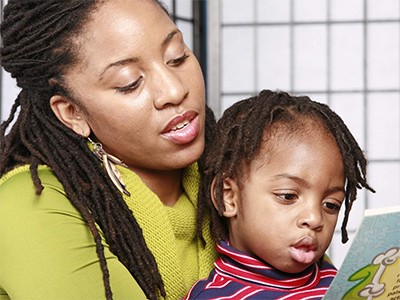 |
Positive Guidance Toward Problem-Solving (CDA 3) |
2.00 |
Early interactions in infancy and toddlerhood often involve exploring boundaries through behaviors like grabbing toys, pulling hair, or biting. This course delves into the reasons behind these behaviors and equips professionals with positive guidance strategies to help children learn conflict resolution without resorting to harm. Through self-assessment tools, you can evaluate your current practices and identify areas for improvement, ultimately enhancing the quality of care for infants and toddlers in your setting. |
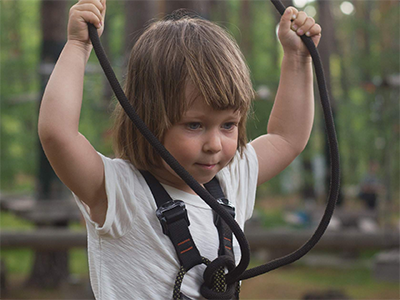 |
Assessing and Implementing a Safe Child Care Environment (CDA 1 & 5) |
2.00 |
Little explorers have big ambitions! As infants and toddlers embark on their journey of discovery, their safety becomes your top priority. This course equips you with the knowledge and tools to proactively create safe and stimulating environments. Learn to assess play spaces, evaluate activities, and refine existing practices, fostering a nurturing atmosphere where exploration and safety flourish hand-in-hand. |
 |
Incorporating Physical Activity Into Every Day (CDA 2) |
2.00 |
This course empowers childcare providers to overcome common challenges and integrate joyful physical activity into their daily routines. Discover practical, budget-friendly solutions to overcome barriers related to space, equipment, and even your expertise. Learn from a leading physical education expert and unlock a treasure trove of engaging activities that get kids moving, laughing, and learning. |
 |
A K-12 Student Guide to Implicit Bias |
1.00 |
Welcome to A K-12 Student Guide to Implicit Bias. In this course geared towards K-12 students, you'll examine implicit bias, why it matters, and what can be done to address it. |


























